Things were pretty normal at the National Gallery of Ireland in June of 2012. That is, until 49-year-old Andrew Shannon walked in and put his fist through a Monet painting of an estimated $10 million value. The painting, Argenteuil Basin with a Single Sailboat, was left with a hole in the middle of its serene landscape scene. The act of bizarre, senseless violence left the art world, as well as much of the rest of the world, stunned.
Meet Andrew Shannon and the assaulted sailboat painting.
 share
share
(Thank goodness it wasn’t one of his water lillies.) Shannon was sentenced to five years in prison for the vandalism, and will not be allowed in any galleries for 15 months after his release. His reasoning for the act was something to do with “getting back at the state,” although he also tried to play it off as an accident. This is unlikely, considering that Shannon was found to have a can of paint stripper on his person after being restrained by museum guards. His home was also found to be full of numerous stolen works of art, books, and antiques.
The damaged painting after its attack in 2012.
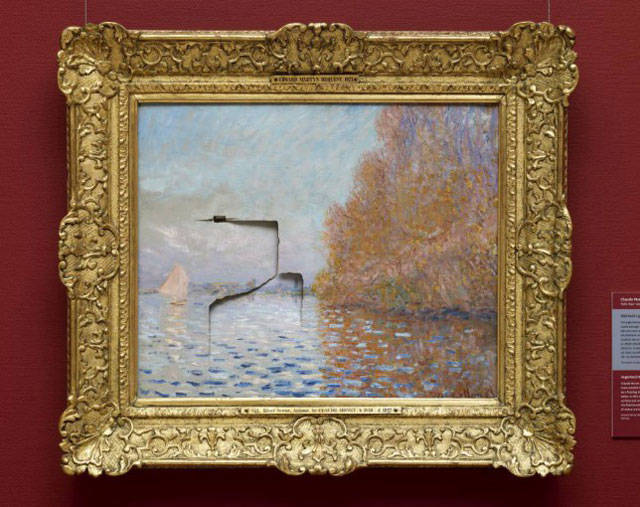 share
share
With Shannon behind bars, the question remained as to what to do about the painting. The painting, which dates from 1874, had to be carefully restored in a painstaking 18-month process to ensure that the damage was repaired and the painting was suitable for display once again. The National Gallery of Ireland revealed the process.
Step 1: Stabilizing the painting
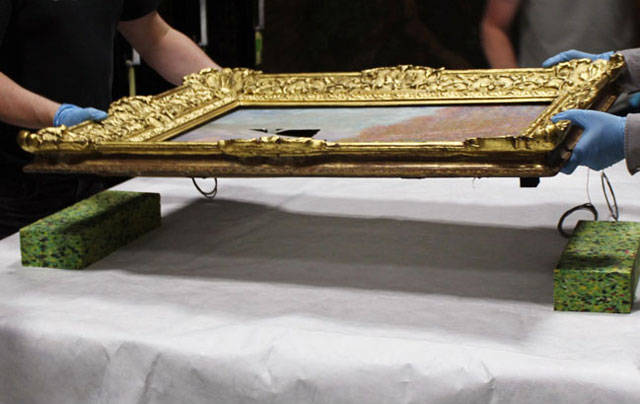 share
share
Due to the impact of the attack, tiny paint fragments and fibers came loose. These all had to be collected and secured before any real work could start. The painting was removed from its frame.
Step 2: Protecting the undamaged paint and unmounting the canvas
 share
share
Since work had to be done on the back of the painting, it would have to be placed face-down. To protect the paint, this layer of special tissue was applied in a process called “facing.” The painting was then turned over and released from its wooden stretcher, where restorers could better access the damaged area.
Step 3: Repairing the tears
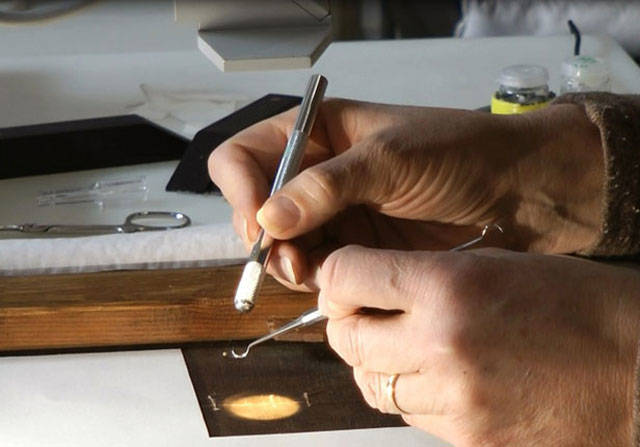 share
share
The canvas was torn, but because it was old and stiff, the result was more like a break. First, the fibers had to be relaxed with moisture. Then, the threads were rejoined using surgical tools and a microscope, and weighted to get them to lie flat. Finally, a special adhesive was applied to keep the joined areas together.
Step 4: Removing the facing
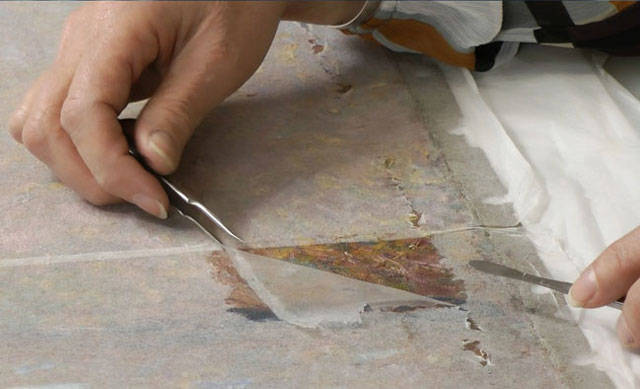 share
share
Now that the damage to the canvas was complete, it was time for the facing to come off. This was done by adding a tiny amount of water. In addition, the painting’s varnished surface was cleaned, which resulted in the colors looking more vibrant.
Step 5: Lining the painting
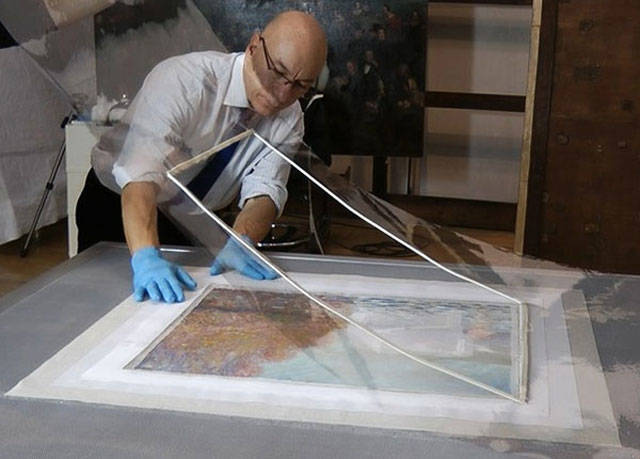 share
share
With some damaged paintings, restoration of the canvas could stop at Step 4. However, this painting was so damaged that a second, supporting layer of canvas was added to the original layer. In this case, a linen canvas was chosen, with a synthetic cushioning layer placed in between it and the original painting. Everything was attached by an adhesive film.
Step 6: Restretching the canvas
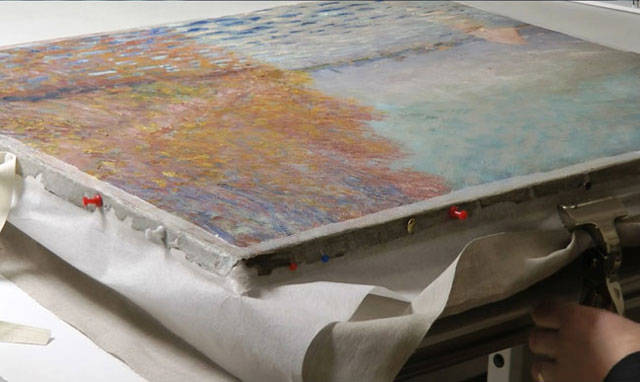 share
share
Now that the painting was secure (thanks to the lining), it was placed back over the original wooden stretchers. The original tacks were used wherever possible. As you can see, some modern tacks were also used.
Step 7: Replacing the loose paint fragments
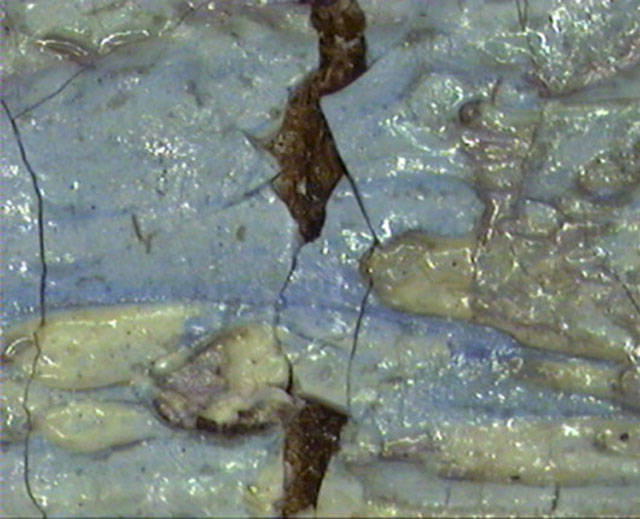 share
share
Prior to this, the painting’s materials were scanned under a microscope so that restorers could find the best, most compatible materials to use during the restoration process. There were over 100 fragments that needed to be carefully returned to their correct places. The largest were only about a millimeter in size. The fragments were replaced where possible, but some gaps remained.
Step 8: Filling the gaps and retouching the paint
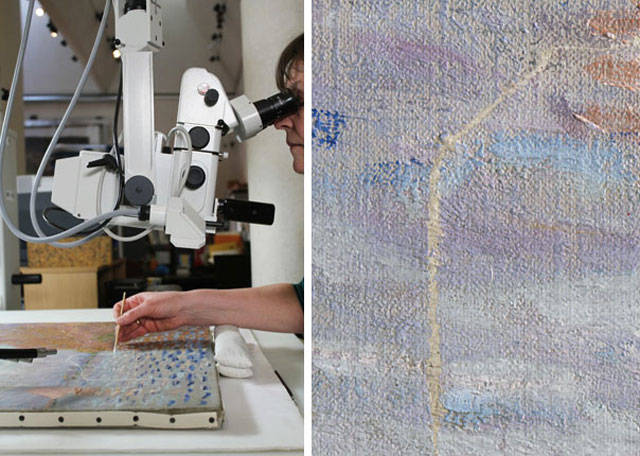 share
share
Restorers carefully filled in where the original paint couldn’t be replaced. First, a chalk-based primer called gesso was applied. Then, watercolors were applied to match the colors. The restoration team also spent time studying Monet’s painting habits, the brushstrokes, and the hand motions he would have made to ensure the closest likeness possible.
After months of meticulous, painstaking repairs, Argenteuil Basin with a Single Sailboat was ready to return to the gallery. To the naked eye, the repaired painting is flawless, and you would never guess that there was a hole punched into it only 18 months ago. However, under a UV light, the repairs are visible. The painting also had the added benefit of a bath, so the colors are even more vibrant.
Interestingly, each and every repair made is completely reversible. That way, if needed, it can be removed in the future when better restoration techniques are developed.
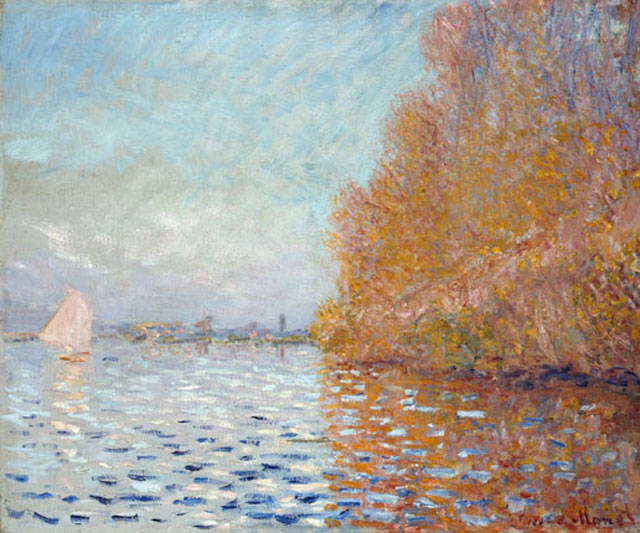 share
share
(via Twisted Sifter)
Aside from all the work done to restore the painting to its former beauty, preventative measures were also taken to keep it safe. Today, it’s in a moisture-controlled, UV-filtering “climate box” to prevent further damage from forces of nature, as well as misdirected rage.
The painting was put back on display on July 1, 2014. It has since enjoyed a celebrated return.
 share
share
 share
share
 share
share
 share
share
 share
share
 share
share
 share
share
 share
share
 share
share
 share
share
 share
share



